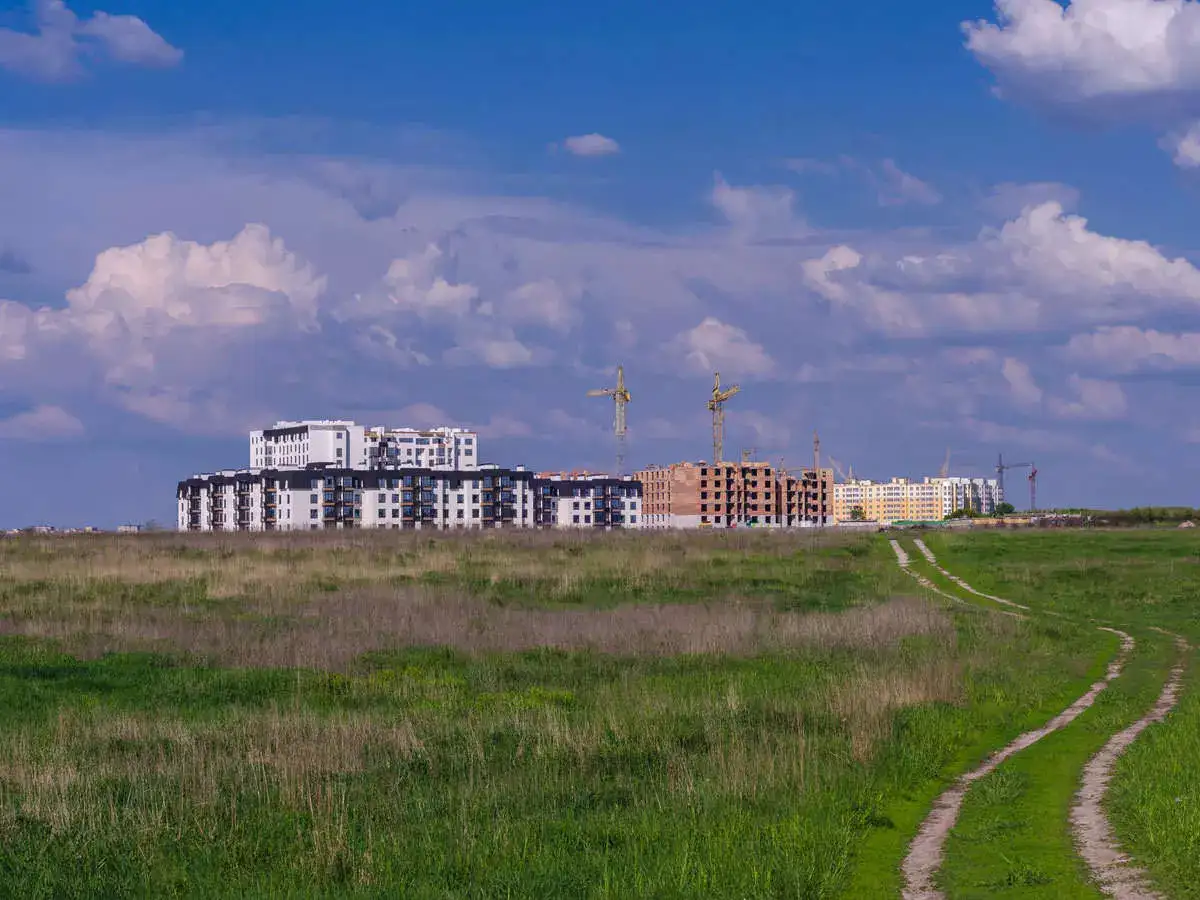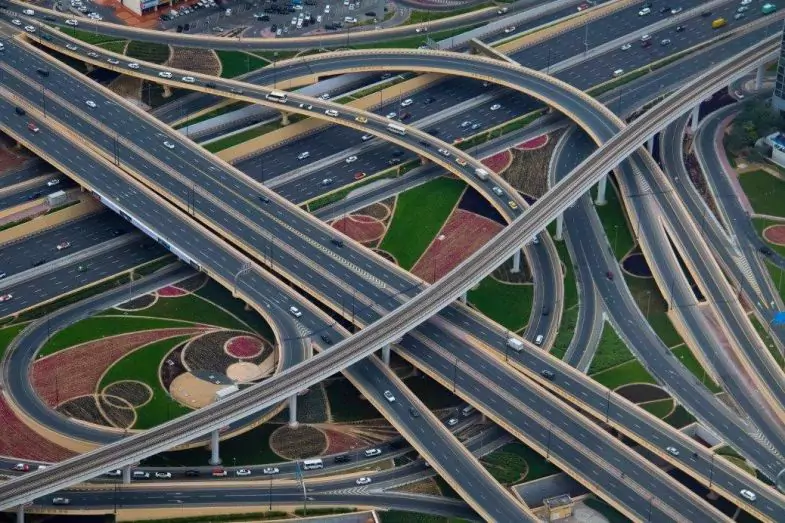National Infrastructure Pipeline (NIP)
The National Infrastructure Pipeline (NIP) is a ₹110 Lakh Crore infrastructure investment initiative launched in 2019 to boost economic growth and improve India’s infrastructure. It aims to enhance connectivity, energy security, and digital transformation while creating employment and attracting private investments.
- Time Frame: 2020-2025
- Stakeholders: Central Government (39%), State Governments (40%), and Private Sector (21%)
- Sectors Covered: Transport, Energy, Water & Sanitation, Digital Infrastructure, Social Infrastructure (Health & Education)
Why is NIP Important for India?
- Addresses Infrastructure Deficit: India needs strong infrastructure to sustain its growth ambitions and compete globally.
- Boosts Economic Growth: A well-planned infrastructure pipeline can increase GDP growth by 2-3%.
- Attracts Foreign Investments: Enhancing infrastructure will encourage FDI in key sectors.
- Improves Ease of Living: Better transport, water, and digital connectivity enhance the quality of life.
Sector-Wise Progress & Updates
- Transport Infrastructure (Roads, Railways, Ports, Aviation)
Roads & Highways:
- Bharatmala Pariyojana: Aimed at building 34,800 km of highways, with multiple expressways under construction.
- Delhi-Mumbai Expressway (1386 km): Expected completion by 2025, reducing travel time to 12 hours.
- Ganga Expressway (UP): 594 km, expected completion by 2025.
- Logistics Parks: 35 multimodal logistics parks being built to improve freight movement.
Railways:
- 100% Electrification Target by 2030, with over 50% electrified by 2025.
- Mumbai-Ahmedabad Bullet Train progressing under the High-Speed Rail Corridor.
- Dedicated Freight Corridors (DFC): Eastern and Western DFCs nearing completion.
- Vande Bharat Express Expansion: More than 100 new routes by 2025.
Ports & Waterways:
- Sagarmala Programme: Over 800 projects worth ₹5.48 Lakh Crore.
- Major Port Modernization: Digitalization of ports and improved capacity utilization.
- Inland Waterways: Ganga, Brahmaputra, and other river transport networks expanded.
Aviation:
- UDAN Scheme Expansion: 100 new regional airports by 2025.
- Greenfield Airports: Noida (Jewar) Airport, Navi Mumbai Airport under development.
- Energy Infrastructure (Power, Renewables, Electric Vehicles,
Hydrogen)
Renewable Energy Goals:
- 500 GW non-fossil fuel capacity by 2030 (solar, wind, hydropower).
- Solar Energy: 280 GW target by 2025, with expansion of rooftop solar.
- Wind Energy: Offshore wind projects progressing, especially in Gujarat & Tamil Nadu.
Electric Vehicles (EVs) & Green Mobility:
- National EV Mission: Expansion of charging stations nationwide.
- Faster Adoption & Manufacturing of Electric Vehicles (FAME II): Subsidies for EV adoption.
Green Hydrogen Mission:
- India aims to become a global leader in green hydrogen
- ₹19,744 crore investment for hydrogen infrastructure by 2025.
Thermal & Hydropower:
- Focus on cleaner coal technologies and large hydropower projects in Northeast India.
- Digital Infrastructure (5G, Smart Cities, AI, Data Centers)
5G Network Expansion:
- 5G rollout in urban and rural areas by 2025.
- Fiber optic network expansion under BharatNet Project for rural broadband.
Smart Cities Mission:
- 100 Smart Cities focus on urban mobility, AI-based governance, and sustainability.
- Digital traffic management and pollution control systems in metros.
Data Centers & Digital Economy:
- Investment in hyperscale data centers to boost India’s IT infrastructure.
- Digital payments, blockchain-based governance projects under NIP.
Funding and Investment Progress
Total Investment (₹110 Lakh Crore) - Sector-wise Allocation:
| Sector | Investment Share (%) |
|---|---|
| Transport (Roads, Rail, Ports) | 37% |
| Energy (Power, Renewables) | 24% |
| Water & Sanitation | 16% |
| Social Infra (Health, Education) | 12% |
| Digital Infrastructure | 11% |
Private Sector Participation
- Public-Private Partnership (PPP) models are being promoted for efficient implementation.
- Sovereign Wealth Funds and Pension Funds are investing in Indian infrastructure.

Challenges in Funding:
- Delay in land acquisition.
- Policy uncertainty for private investors.
- High fiscal burden on states and center.
Strategic Significance of NIP in India’s Economic Growth
NIP is not just an infrastructure plan but a critical enabler for India’s transformation into a $5 trillion economy. Infrastructure contributes to higher productivity, industrial growth, employment generation, and regional development.
- Multiplier Effect on GDP: Infrastructure investment has a multiplier effect of 2.5 to 3 times on GDP, meaning ₹1 spent on infrastructure can contribute ₹2.5-3 to the economy.
- Boost to Employment: Infrastructure projects under NIP can generate over 3 crore jobs across sectors.
- Attracting Foreign Direct Investment (FDI): Global investors are keen to invest in logistics, energy, and telecom infrastructure.
Key Linkages Between NIP and Government Flagship Programs
| NIP Sector | Related Government Scheme | Interconnection |
|---|---|---|
| Roads & Highways | Bharatmala Pariyojana | NIP is funding expressways, economic corridors, and logistics hubs |
| Railways | PM Gati Shakti + DFC | Dedicated Freight Corridors (DFCs) align with Gati Shakti for seamless logistics |
| Urban Transport | Smart Cities Mission + Metro Expansion | Metro rail projects in major cities are NIP-funded |
| Aviation | UDAN (Ude Desh Ka Aam Nagrik) | Regional airport development under NIP |
| Ports & Shipping | Sagarmala Programme | Port connectivity, modernization, and industrial corridors |
| Energy (Renewables) | National Solar Mission, Green Hydrogen Mission | NIP funds large-scale solar, wind, and hydrogen projects |
| Digital Infrastructure | BharatNet, 5G Expansion | Fiber optics, broadband for rural connectivity |
Analysis:
- NIP enhances multimodal connectivity by integrating road, rail, ports, and airports under PM Gati Shakti.
- Urban infrastructure is being revamped through metro expansions, water supply projects, and smart governance initiatives.
- Renewable energy investments align with India’s Net Zero 2070 target.
Economic & Social Impact of NIP
Macroeconomic Benefits
- Increases Ease of Doing Business (EoDB): Efficient logistics, better transport networks.
- Boost to Manufacturing & Exports: Reduces costs, improves competitiveness.
- Growth of Startups & Digital Economy: 5G, fiber connectivity fostering innovation.
Social Impact
- Better Quality of Life: Improved metro connectivity, clean water, and smart urban solutions.
- Skill Development & Jobs: Infrastructure projects create direct & indirect employment.
- Rural Upliftment: BharatNet & UDAN improve rural digital & air connectivity.
Challenges & Roadblocks in NIP Implementation
- Delays in Land Acquisition: Major projects face land acquisition delays due to legal and compensation issues.
- Financing & Debt Concerns: India’s fiscal space is limited, requiring innovative financing models.
- Environmental & Social Concerns: Infrastructure expansion must balance environmental sustainability with growth.
- Bureaucratic Delays & Policy Hurdles: Project approvals and clearances slow down execution.
| Challenges | Proposed Solutions |
|---|---|
| Land Acquisition Delays | Faster land reforms, digitization of land records |
| High Fiscal Deficit | Monetization of infrastructure assets (e.g., toll roads, airports) |
| Slow Private Sector Participation | Incentives under National Monetization Pipeline (NMP) |
| Environmental Concerns | Strict adherence to ESG (Environmental, Social, Governance) norms |
| Project Delays & Cost Overruns | Digital tracking under PM Gati Shakti |
Innovative Financing Models in NIP
- Infrastructure Investment Trusts (InvITs) & Real Estate Investment Trusts (REITs)
- Sovereign Wealth Funds (SWFs) & Foreign Direct Investment (FDI)
- Asset Monetization (Airports, Highways, Railways under NMP)
Future Prospects & Policy Recommendations
- Strengthening Public-Private Partnerships (PPP):
- More private participation in roads, power, and telecom needed.
- Sustainable & Green Infrastructure Development:
- Focus on solar, wind, EVs, and hydrogen.
- Digital Governance & AI in Infrastructure:
- AI-based traffic management, urban planning, and smart grids will drive efficiency.
- State-Centered Infrastructure Development:
- State governments need to improve execution capacity to meet NIP targets.
The National Infrastructure Pipeline (NIP) is India’s largest infrastructure investment initiative, laying the foundation for a $5 Trillion economy. 2025 is a crucial milestone, with key projects likehighways, metro expansions, smart cities, 5G, and renewable energy expected to transform India’s infrastructure landscape. However, financing constraints, land acquisition, and policy challenges must be addressed to ensure timely implementation.













